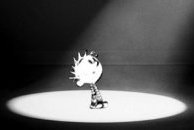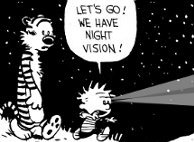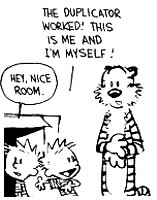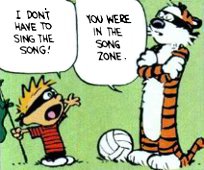Seeing and being
Preface
 This is an essay on the “hard problem” of consciousness. If we focus on visual consciousness for simplicity, this is often said to be the problem of explaining how the everyday phenomenon we call seeing “arises” from the brain. But I have never liked this way of phrasing the problem because it strikes me that we have a poor grasp (to begin with) of the everyday phenomenon of seeing itself. —What is this thing we call seeing? So, in the essay, I explore instead the prior question of what we suppose the everyday phenomenon of seeing even to be—a question just as hard, but one which I find to be considerably more fruitful. And the only decent answer I can come up with suggests that a certain form of “neutral monism” may be the true relation between mind and body. Written in 2014.
This is an essay on the “hard problem” of consciousness. If we focus on visual consciousness for simplicity, this is often said to be the problem of explaining how the everyday phenomenon we call seeing “arises” from the brain. But I have never liked this way of phrasing the problem because it strikes me that we have a poor grasp (to begin with) of the everyday phenomenon of seeing itself. —What is this thing we call seeing? So, in the essay, I explore instead the prior question of what we suppose the everyday phenomenon of seeing even to be—a question just as hard, but one which I find to be considerably more fruitful. And the only decent answer I can come up with suggests that a certain form of “neutral monism” may be the true relation between mind and body. Written in 2014.
 This is an essay on the “hard problem” of consciousness. If we focus on visual consciousness for simplicity, this is often said to be the problem of explaining how the everyday phenomenon we call seeing “arises” from the brain.
This is an essay on the “hard problem” of consciousness. If we focus on visual consciousness for simplicity, this is often said to be the problem of explaining how the everyday phenomenon we call seeing “arises” from the brain.
10. One-component models of seeing
Consider first a certain (naive) model of seeing that we might call the “spotlight model” of seeing.
On this model, seeing is something like the falling of a “spotlight” upon the thing being seen. This is supposed to confer “visual presence” upon the thing, as it were. This model has a certain innocent appeal because we all know what it’s like to look for something in the dark using a spotlight, or a torch, and the model simply recounts this familiar experience.
Of course, the model is not very helpful because the eye is nothing like a spotlight in the intended sense, or in any other sense. And, even if it were – e.g., even if an eye always came attached with a torch – the model would still not help because it simply equates seeing with the bathing of an object in light. But this explains very little because the phenomenon of seeing can remain baffling even after we grasp that seeing requires that an object be bathed in light. So the model really throws no light on the phenomenon of seeing.
The model is useful in a different way, however. Notice that it regards seeing as a “superimposition” of some sort upon the thing being seen. To begin with, there is the thing being seen. Superimposed upon this, there is a quite separate phenomenon – in this case, the bathing of light – held to constitute the seeing of the thing. We might call this a “two-component” model of seeing and it is this aspect of the model that I would like to focus on here.
In some form or other, a two-component model is very natural to endorse. We have already seen that many philosophers conceive of seeing as the occurrence of a “visual experience” in the brain, as a result of causal stimulation by the world. Here is the tree that you see. On top of this, a “visual experience” of the tree occurs in your brain, which is the seeing of the tree. In this case, we have a phenomenon in the brain instead of an external bathing of light, i.e., the second component in the model now takes a very different form. But this is a two-component model no less.
I have already explained why this conception of seeing cannot be attributed to the layman, but I am merely using it as a second example – a popular one as it happens – of a two-component model of seeing.
Indeed, whatever our dissatisfactions with either the “spotlight” or “visual experience” model of seeing, a two-component model of some sort may seem to be non-negotiable – even for the layman. After all, the tree is what it is regardless of whether it is being seen – any layman would surely agree with this. So the seeing of the tree, whatever this amounts to, must “obviously” be something “over and above” the being of the tree. Nevertheless, the broad thrust of our investigation so far has been to suggest that a two-component model of seeing barks up the wrong tree, and this is the point that I would like to make in this section.
The core point was made by our omnivisual being. Recall that, the way we introduced him, he had no initial need to distinguish seeing from being, although subsequent circumstances might compel him to draw the distinction in order to make “renewed sense” of his surroundings. But notice that his drawing the distinction – should this come to pass – cannot be the result of his coming to recognize a new phenomenon (“seeing”) over and above an old one (“being”) – or anything of this sort. After all, prior to introducing the concept of seeing, he would not have recognized even the concept of being.
Rather, seeing is something that he cleaves apart from being, as opposed to something that he adds to it, as the two-component model would tend to suggest. There is a sense here in which the two concepts are originally entwined as one.
This may be clearer in the case of pain. As suggested above, children tend not to distinguish a pain from the feeling of it, but may eventually be compelled to make the distinction as they mature cognitively. When someone has learnt to say, “I feel a pain in my finger,” rather than just, “Ouch,” he has certainly learnt a new way of talking, but it is not reasonable to suppose that he has noticed a new phenomenon – the feeling of the pain, where he previously only noticed the pain. Rather, he now distinguishes the feeling from the pain where he previously “collapsed” them, i.e., made no distinction between the feeling and the pain. Again, the feeling is not something added onto the pain, but something cleaved apart from it.
This “conceptual cleaving” is actually rather common and found in many cases that have nothing to do with the mind-body problem. Consider the case of singing a song. On the one hand, the grammar of the expression, ‘singing a song,’ suggests that we do differentiate the act of singing from the song itself, which latter we are prepared to hold (in some sense) to be a separable thing.
On the other hand, it also seems clear that, in a more basic sense, whenever someone sings a song, the song itself is nothing more than the singing of it. At bottom, the singing of the song is just the song – there is essentially one entity here, not two.
In so far as we distinguish the singing from the song, therefore, the singing is more reasonably supposed to be “cleaved apart” from the song than “superimposed” upon it. (Singing a song is not like clapping one’s hands, which would be a true case of superimposition.) But what exactly is this “cleaving” business and how does it generate two things out of one? In cleaving the singing from the song, we are obviously not doing anything like cleaving apart two halves of a coconut.
Where singing a song is concerned, it is not hard to see what is going on. The “song” is simply an abstraction from different instances of similar vocal activity. We count different performances, on different occasions, as acts of singing the same song, so long as they are similar enough in various respects – same words, same tune, etc. – relative to our reasons for wanting to isolate such things as “songs” at all. (I won’t examine those reasons here.)
Having abstracted the song, we can then isolate it to some degree from the singing. We can speak of a song that is not now being sung, or two people singing the same song, or even a song that has yet to be written. But the isolation can never be total – it is nonsense, except as a joke, to imagine a song that cannot even in principle be sung.
The act of “singing” is likewise an abstraction. Each of various different performances may count as an act of singing, though (say) of different songs. As before, the singing can then be isolated to some degree from the song – e.g., a song may have been sung well on one occasion, but poorly on another, and so on. But the isolation can again never be total – it is nonsense to speak of someone singing anything other than a song.
So the sense in which a singing is cleaved from a song is relatively unmysterious, even if not as simple as cleaving apart two halves of a coconut. The main difference is that a singing and a song are ontologically entwined in a way in which the two halves of a coconut are not. For all that, we may “separate” a singing from a song. A song may even be said to be what it is – e.g., it can be transcribed and preserved in musical notation – regardless of whether it is currently being sung. But this is consistent with the fact that a song is, fundamentally, nothing more than its singing. In particular, it does not follow that the singing must be something “over and above” the song.
Notice also that a child may delight in the singing-of-a-song long before it learns to abstract (cleave apart) the singing from the song. What, to an adult, is the singing of a song may, to a child, simply be an undivided whole. Such a child would be like someone who has yet to distinguish the feeling from the pain and who can only think to say, “Ouch!”
The analogy of singing a song can only be pushed so far, however. I am using it mainly to show that there is a familiar sense of “cleaving two entities out of one” that is helpful for our purposes. It can also take many forms. Flashing a smile and dancing the waltz are very much like singing a song, but the rippling of waves and the blowing of the wind involve quite different sorts of abstractions from an otherwise unified ontology. One can also cast a shadow, dig a hole, or raise an alarm – there are many such cases, actually.
None of these cases is exactly like feeling a pain or seeing a thing. Nevertheless, in each of them, a “two-component” model would be badly misplaced, despite the discernible presence in each case of two “entities” rather than one. Thus, someone who thought that a wave moving towards the shore was comparable to a boat moving towards the shore would be pretty badly confused. Rather, a “one-component” model is called for, out of which two entities may then be cleaved, where the manner of the cleaving may depend on the case. Cleaving a wave apart from its motion is very different from cleaving a song apart from its singing, as a little thought will show, and cleaving “seeing” apart from “being” – as I will suggest further below – is a completely different thing altogether. This is why the analogy of singing a song cannot be pushed too far.
Where the philosophy of mind is concerned, two-component models of seeing have traditionally been the norm, although one-component analyses are not unheard of. It will be useful to quickly examine two famous ones here.
 A classic example of a one-component model was the adverbial model of sense experience, which had some prominence in the second half of the twentieth century. As applied to simple perceptual experiences like seeing something blue, or tasting something bitter, the essential idea was explained by C. J. Ducasse as follows:
A classic example of a one-component model was the adverbial model of sense experience, which had some prominence in the second half of the twentieth century. As applied to simple perceptual experiences like seeing something blue, or tasting something bitter, the essential idea was explained by C. J. Ducasse as follows:
Whatever its virtues, the adverbial model was meant only to cover cases of simple sensory experience like seeing a blue flash or feeling a sharp pain, where the alleged “objects” of perception – the blue flash, the sharp pain – might plausibly be treated as ontological fictions. The model was not meant to subsume a case like seeing a tree, because a tree was not supposed to be an ontological fiction. Indeed, an adverbialist would typically revert to a two-component model in the case of seeing a tree and allow that the seeing – e.g., a brain process – was something “over and above” the tree.
 An older and metaphysically deeper form of one-component analysis – intended certainly to apply to seeing a tree – was famously offered by idealists, or their phenomenalist cousins, e.g., someone like George Berkeley or John Stuart Mill. According to the idealist, a tree is a certain kind of logical construction out of “tree-like” sense experiences. At bottom, there is no tree, just various episodes of “seeing” that occur in your mind.
An older and metaphysically deeper form of one-component analysis – intended certainly to apply to seeing a tree – was famously offered by idealists, or their phenomenalist cousins, e.g., someone like George Berkeley or John Stuart Mill. According to the idealist, a tree is a certain kind of logical construction out of “tree-like” sense experiences. At bottom, there is no tree, just various episodes of “seeing” that occur in your mind.
The general idea is familiar from the case of dreams. When you dream of a tree, there is obviously no tree lodged inside your brain, only various sensory episodes with “tree-like” contents. If these sensory episodes cohere well with one another, then there can be every appearance of interacting with a tree. Exactly the same happens when you see an “actual” tree, says the idealist – the tree that you see is likewise “constructed” out of various sense experiences that you then have. For the idealist, there is nothing more to a tree than a bundle of such experiences, and the difference between the dream tree and the actual tree is simply the evanescent nature of the sense experiences of the former. (If the sense experiences persist, we count it as an actual tree.)
In thus reducing a tree to a bundle of experiences, the idealist would clearly deny that the seeing of a tree was something “over and above” the tree. In other words, he would decline a two-component model of seeing. He would claim rather that, some subtleties aside, the tree is nothing more than its being seen – esse est percipi – just as a pain is nothing more than its being felt. This broad position has been much maligned in the twentieth century but then the “materialism” that has followed in its wake has now run up against the “hard problem” of consciousness – so what can one say? Idealism is actually a very useful foil for the position that I am trying to articulate in this essay, which is partly why I brought it up. So let’s consider this at once.
Consider first a certain (naive) model of seeing that we might call the “spotlight model” of seeing.
On this model, seeing is something like the falling of a “spotlight” upon the thing being seen. This is supposed to confer “visual presence” upon the thing, as it were. This model has a certain innocent appeal because we all know what it’s like to look for something in the dark using a spotlight, or a torch, and the model simply recounts this familiar experience.
Of course, the model is not very helpful because the eye is nothing like a spotlight in the intended sense, or in any other sense. And, even if it were – e.g., even if an eye always came attached with a torch – the model would still not help because it simply equates seeing with the bathing of an object in light. But this explains very little because the phenomenon of seeing can remain baffling even after we grasp that seeing requires that an object be bathed in light. So the model really throws no light on the phenomenon of seeing.
The model is useful in a different way, however. Notice that it regards seeing as a “superimposition” of some sort upon the thing being seen. To begin with, there is the thing being seen. Superimposed upon this, there is a quite separate phenomenon – in this case, the bathing of light – held to constitute the seeing of the thing. We might call this a “two-component” model of seeing and it is this aspect of the model that I would like to focus on here.
In some form or other, a two-component model is very natural to endorse. We have already seen that many philosophers conceive of seeing as the occurrence of a “visual experience” in the brain, as a result of causal stimulation by the world. Here is the tree that you see. On top of this, a “visual experience” of the tree occurs in your brain, which is the seeing of the tree. In this case, we have a phenomenon in the brain instead of an external bathing of light, i.e., the second component in the model now takes a very different form. But this is a two-component model no less.
I have already explained why this conception of seeing cannot be attributed to the layman, but I am merely using it as a second example – a popular one as it happens – of a two-component model of seeing.
Indeed, whatever our dissatisfactions with either the “spotlight” or “visual experience” model of seeing, a two-component model of some sort may seem to be non-negotiable – even for the layman. After all, the tree is what it is regardless of whether it is being seen – any layman would surely agree with this. So the seeing of the tree, whatever this amounts to, must “obviously” be something “over and above” the being of the tree. Nevertheless, the broad thrust of our investigation so far has been to suggest that a two-component model of seeing barks up the wrong tree, and this is the point that I would like to make in this section.
The core point was made by our omnivisual being. Recall that, the way we introduced him, he had no initial need to distinguish seeing from being, although subsequent circumstances might compel him to draw the distinction in order to make “renewed sense” of his surroundings. But notice that his drawing the distinction – should this come to pass – cannot be the result of his coming to recognize a new phenomenon (“seeing”) over and above an old one (“being”) – or anything of this sort. After all, prior to introducing the concept of seeing, he would not have recognized even the concept of being.
Rather, seeing is something that he cleaves apart from being, as opposed to something that he adds to it, as the two-component model would tend to suggest. There is a sense here in which the two concepts are originally entwined as one.
This may be clearer in the case of pain. As suggested above, children tend not to distinguish a pain from the feeling of it, but may eventually be compelled to make the distinction as they mature cognitively. When someone has learnt to say, “I feel a pain in my finger,” rather than just, “Ouch,” he has certainly learnt a new way of talking, but it is not reasonable to suppose that he has noticed a new phenomenon – the feeling of the pain, where he previously only noticed the pain. Rather, he now distinguishes the feeling from the pain where he previously “collapsed” them, i.e., made no distinction between the feeling and the pain. Again, the feeling is not something added onto the pain, but something cleaved apart from it.
This “conceptual cleaving” is actually rather common and found in many cases that have nothing to do with the mind-body problem. Consider the case of singing a song. On the one hand, the grammar of the expression, ‘singing a song,’ suggests that we do differentiate the act of singing from the song itself, which latter we are prepared to hold (in some sense) to be a separable thing.
On the other hand, it also seems clear that, in a more basic sense, whenever someone sings a song, the song itself is nothing more than the singing of it. At bottom, the singing of the song is just the song – there is essentially one entity here, not two.
In so far as we distinguish the singing from the song, therefore, the singing is more reasonably supposed to be “cleaved apart” from the song than “superimposed” upon it. (Singing a song is not like clapping one’s hands, which would be a true case of superimposition.) But what exactly is this “cleaving” business and how does it generate two things out of one? In cleaving the singing from the song, we are obviously not doing anything like cleaving apart two halves of a coconut.
Where singing a song is concerned, it is not hard to see what is going on. The “song” is simply an abstraction from different instances of similar vocal activity. We count different performances, on different occasions, as acts of singing the same song, so long as they are similar enough in various respects – same words, same tune, etc. – relative to our reasons for wanting to isolate such things as “songs” at all. (I won’t examine those reasons here.)
Having abstracted the song, we can then isolate it to some degree from the singing. We can speak of a song that is not now being sung, or two people singing the same song, or even a song that has yet to be written. But the isolation can never be total – it is nonsense, except as a joke, to imagine a song that cannot even in principle be sung.
The act of “singing” is likewise an abstraction. Each of various different performances may count as an act of singing, though (say) of different songs. As before, the singing can then be isolated to some degree from the song – e.g., a song may have been sung well on one occasion, but poorly on another, and so on. But the isolation can again never be total – it is nonsense to speak of someone singing anything other than a song.
So the sense in which a singing is cleaved from a song is relatively unmysterious, even if not as simple as cleaving apart two halves of a coconut. The main difference is that a singing and a song are ontologically entwined in a way in which the two halves of a coconut are not. For all that, we may “separate” a singing from a song. A song may even be said to be what it is – e.g., it can be transcribed and preserved in musical notation – regardless of whether it is currently being sung. But this is consistent with the fact that a song is, fundamentally, nothing more than its singing. In particular, it does not follow that the singing must be something “over and above” the song.
Notice also that a child may delight in the singing-of-a-song long before it learns to abstract (cleave apart) the singing from the song. What, to an adult, is the singing of a song may, to a child, simply be an undivided whole. Such a child would be like someone who has yet to distinguish the feeling from the pain and who can only think to say, “Ouch!”
The analogy of singing a song can only be pushed so far, however. I am using it mainly to show that there is a familiar sense of “cleaving two entities out of one” that is helpful for our purposes. It can also take many forms. Flashing a smile and dancing the waltz are very much like singing a song, but the rippling of waves and the blowing of the wind involve quite different sorts of abstractions from an otherwise unified ontology. One can also cast a shadow, dig a hole, or raise an alarm – there are many such cases, actually.
None of these cases is exactly like feeling a pain or seeing a thing. Nevertheless, in each of them, a “two-component” model would be badly misplaced, despite the discernible presence in each case of two “entities” rather than one. Thus, someone who thought that a wave moving towards the shore was comparable to a boat moving towards the shore would be pretty badly confused. Rather, a “one-component” model is called for, out of which two entities may then be cleaved, where the manner of the cleaving may depend on the case. Cleaving a wave apart from its motion is very different from cleaving a song apart from its singing, as a little thought will show, and cleaving “seeing” apart from “being” – as I will suggest further below – is a completely different thing altogether. This is why the analogy of singing a song cannot be pushed too far.
Where the philosophy of mind is concerned, two-component models of seeing have traditionally been the norm, although one-component analyses are not unheard of. It will be useful to quickly examine two famous ones here.

“Blue,” “bitter,” “sweet,” etc., are names not of objects of experience nor of species of objects of experience but of species of experience itself. What this means is perhaps made clearest by saying that to sense blue is then to sense bluely, just as to dance the waltz is to dance “waltzily” ... , to jump a leap is to jump “leapily” ... , etc. (‘Moore’s “The Refutation of Idealism,”’ pp. 232–3.)This adverbial conception was meant to oppose the notorious sense datum model, on which seeing something blue was deemed (literally) to have a act-object structure, whereby an act of seeing was directed upon a separable entity – the blue sense datum. This is a decidedly two-component view. On the adverbial model, in contrast, there is no such “thing” as the blue sense datum, except in a manner of speaking. At bottom, there is just the seeing, done in a particular way – done “bluely,” as Ducasse puts it. (The seeing was typically assumed to be a sort of brain process.)
Whatever its virtues, the adverbial model was meant only to cover cases of simple sensory experience like seeing a blue flash or feeling a sharp pain, where the alleged “objects” of perception – the blue flash, the sharp pain – might plausibly be treated as ontological fictions. The model was not meant to subsume a case like seeing a tree, because a tree was not supposed to be an ontological fiction. Indeed, an adverbialist would typically revert to a two-component model in the case of seeing a tree and allow that the seeing – e.g., a brain process – was something “over and above” the tree.

The general idea is familiar from the case of dreams. When you dream of a tree, there is obviously no tree lodged inside your brain, only various sensory episodes with “tree-like” contents. If these sensory episodes cohere well with one another, then there can be every appearance of interacting with a tree. Exactly the same happens when you see an “actual” tree, says the idealist – the tree that you see is likewise “constructed” out of various sense experiences that you then have. For the idealist, there is nothing more to a tree than a bundle of such experiences, and the difference between the dream tree and the actual tree is simply the evanescent nature of the sense experiences of the former. (If the sense experiences persist, we count it as an actual tree.)
In thus reducing a tree to a bundle of experiences, the idealist would clearly deny that the seeing of a tree was something “over and above” the tree. In other words, he would decline a two-component model of seeing. He would claim rather that, some subtleties aside, the tree is nothing more than its being seen – esse est percipi – just as a pain is nothing more than its being felt. This broad position has been much maligned in the twentieth century but then the “materialism” that has followed in its wake has now run up against the “hard problem” of consciousness – so what can one say? Idealism is actually a very useful foil for the position that I am trying to articulate in this essay, which is partly why I brought it up. So let’s consider this at once.
Menu
 What’s a logical paradox?
What’s a logical paradox? Achilles & the tortoise
Achilles & the tortoise The surprise exam
The surprise exam Newcomb’s problem
Newcomb’s problem Newcomb’s problem (sassy version)
Newcomb’s problem (sassy version) Seeing and being
Seeing and being Logic test!
Logic test! Philosophers say the strangest things
Philosophers say the strangest things Favourite puzzles
Favourite puzzles Books on consciousness
Books on consciousness Philosophy videos
Philosophy videos Phinteresting
Phinteresting Philosopher biographies
Philosopher biographies Philosopher birthdays
Philosopher birthdays Draft
Draftbarang 2009-2024  wayback machine
wayback machine
 wayback machine
wayback machine







